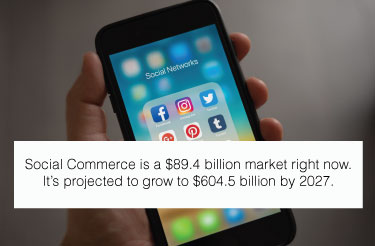No matter what you’re looking for, it is easy enough to jump online and find an online store that has it, whether in your country or not. A few extra dollars for shipping won’t break the bank or waiting an extra week is no big deal when you’re getting exactly what you were looking for as opposed to settling for whatever your local store has. It might get you thinking, how does that all work? How am I able to see products selling in a country halfway across the world? eCommerce sure has expanded the scope for consumerism and allows for the flow of goods to travel much more simply than a couple of years prior. Although eCommerce may have only become common within the last decade, it constantly changes and now with the use of technology, companies small and large need to be aware of the many business model strategies to remain competitive.
We won’t get into the history of eCommerce, but we will look into eCommerce-based business model examples that you should consider if you’re competing to sell your products in the online space. Depending on your business type, the product you sell and the markets you serve, these examples can be used individually, or you could combine them to really amp up your eCommerce presence and provide your customers with the best possible experience. Let’s look at a few and learn how they can grow your business.
Business Model Example #1: Brick and Click
Brick and Click is when a company integrates both offline and online presences to their business model. This means that they operate both in-person through a physical store (Brick-and-Mortar) and virtually through online (Click) eCommerce methods. By giving customers both an online and offline channel for shopping, you are able to satisfy the needs of many consumers, near and far. A good example of Brick and Click is Old Navy. Amazon on the other hand, during its inception, did not have a physical store and was not using a Brick and Click business model. But, they did recognize the importance of having both channels and are now operating Whole Foods physical stores and Amazon Go, cashier-less grocery stores. If Amazon, the eCommerce giant of the world understands the importance of having both channels, then you should too. So, what’s the big deal? Convenience. By using a Brick and Click business model, you give your customers options and when all moving parts work cohesively, you provide the best possible experience.
Even during the Covid Pandemic, we learn how important it is for companies to be dynamic and the need to cater to consumers at a moment’s notice. We also saw that companies who weren’t able to do this, unfortunately failed.
Now that you understand the importance of having both physical and online stores, we can dig into online sales tactics, such as social media.
Business Model Example #2: S-Commerce
S-Commerce or social commerce uses social networking websites such as Instagram, Facebook, and Pinterest to promote and sell products and services. It is important to note that not only does the promotion of goods happen on social media, but the entire sales process takes place including completing the purchase right on the app itself. If you use any of these social networks, you have likely seen S-Commerce whether it be a company selling shoes as an ad or an influencer linking to their favorite brands. The Shop Now button on Facebook or the Swipe Up tool in Instagram stories are both examples of the beginning of the S-Commerce experience. Once you click those buttons or swipe up, you’re brought to an online store that is not redirected to the company’s website, instead, the shop lives right on the app.
If you find it difficult to understand the difference between eCommerce and Social Commerce, remember that S-Commerce allows for the customer to make their purchase within the social media experience. eCommerce refers to selling a product on a website or a dedicated branded app (not a free, public social media app).
Business Model Example #3: Headless Commerce
You are already aware that your business has a front-end (what the consumers see) and a back-end (what they don’t see). When eCommerce first came around, it was common for companies to use a monolithic structure where you had to use the same hardware as you are using software. For instance, if you buy IBM hardware you must use IBM software which meant the front-end and back-end of the business are always connected. With the introduction of Cloud-based software, companies are now able to separate the hardware from software and thus separate the front end of the business from the back end. To explain simply, monolith structure requires all moving parts to be updated and released at the same time whereas with headless commerce, you would be able to change the front end of your business (photos of your products) whenever you want without disrupting anything on the back-end. Think of Target for example. They noticed that their customer base starts and finishes the buying process from multiple devices and by using a headless commerce business model, they are able to unify the customer experience across different devices and capture those customers before they moved on to Amazon or Walmart. A headless commerce business model not only allows for seamless website updates, but you also get complete ownership over site architecture, the ability to provide a much smoother customer experience by following an experience-led strategy and less work for IT teams as the SaaS provider takes on any risks in the back-end.











